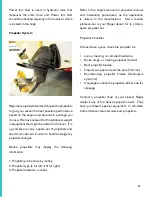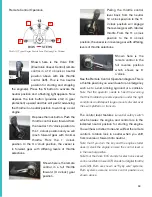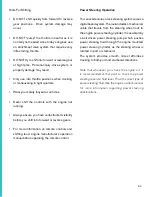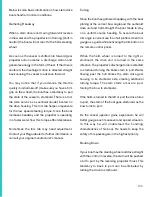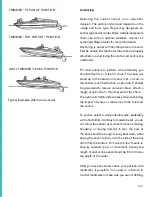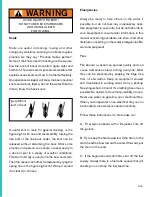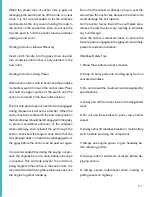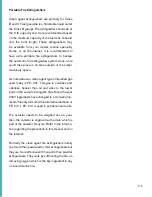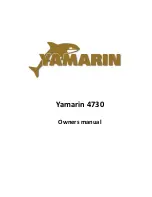
99
Sometimes the mooring line will lead down sharply
from the piling to the deck cleat. Loop the eye splice
around the piling twice to keep it from being pulled
up off the pile.
Pull the line through the looped eye if the mooring
line is too small to go around the piling twice or too
small to fit over once.
If you must drop a line over a piling that already
holds another boat’s line, run the eye of the line up
through the first eye from below, then loop it over the
pile. This will allow either line to be removed without
disturbing the other. If another line is dropped over
yours, simply reverse the process. Secure a little
slack in the other dock line, then slip your eye up
through its loop and over the top of the pile. Your
line can be dropped through the other eye.
When debarking from a dock, it is easier to release
the line from a cleat or piling, from on board the
boat, as soon as you leave the dock. Loop a long line
around the cleat or pier and leading both ends on
board you can release the line easily. Slip one end
around the cleat or pile, the pull it back on board.
Release the line without the eye splice, so it will
run freely from around the pile without hanging up
on the splice.
Fenders
Fenders are normally made of a rubberized plastic
and are usually filled with air. Most have a fitting
like a basketball so they can be inflated or deflated.
Fenders are available in a wide range of sizes and
shapes to fit both small and large vessels. Fenders
are normally designated in inches. They are used
between piers, docks, sea walls and the boat.
They protect the top sides of the boat from rubbing
against rough objects. Most fenders have eyes
of attachment which allow a line to be inserted
vertically or horizontally. This will permit the fender
to be tied off to fit a variety of marina, dock and
tidal situations. Be sure the fender is correct for the
vessel size. It is a good idea to carry extra fenders
but half a dozen is normally an acceptable number.
Remember to store fenders on board so they can
be easily accessed. Some people incorrectly call
fenders “bumpers”.
Note that optional fender clips are available for your
vessel.
There is a variety of fender styles
and types, each selected for
specified uses. When choosing
fenders, contact a marine dealer
or supply house. Explain how you
moor and use your vessel so they
can recommend the best fender
type for you. We suggest the type with a fill plug
so you can inflate them with a hand pump like the
ones used for bicycles.
Stern Drive Maneuvering
Directing propeller energy (thrust) makes slower
speed maneuvering easier. The propeller discharge
current is turned from one side to the other which
results in turning forces. Rudder boats need water
to flow by the rudder to be efficient. Stern drive units
are designed to have reduced shaft angle, so the
propeller does not produce as much unequal blade
thrust and resistance. Large horsepower boats do
produce more thrust and steering torque but your
vessel has the advantage of a”fly by wire” steering.
Summary of Contents for LS4C
Page 1: ...REGAL LS4C OWNER S MANUAL OCTOBER 2018 EDITION...
Page 29: ...29 Navigation Light Rules...
Page 43: ...43 Navigation Rules...
Page 46: ...46 Lateral Aids...
Page 47: ...47 Channel Markers Regulatory Markers...
Page 49: ...49...
Page 50: ...50...
Page 78: ...78...
Page 123: ...123 INSTALLING TRAVEL STORAGE COVER Travel Storage Cover Typical Continued...
Page 194: ...194...
Page 195: ...195...
Page 196: ...196...
Page 197: ...197...
Page 198: ...198...
Page 200: ...200 PROPRIETARY RIGHTS HH1 HH2 HH3 HH4 HH 5 HH2 HH3 HH5 HH4...
Page 201: ...201...
Page 202: ...202...
Page 203: ...203...
Page 204: ...204...
Page 205: ...205...
Page 206: ...206...
Page 207: ...207...
Page 208: ...208...
Page 209: ...209...
Page 210: ...210...



